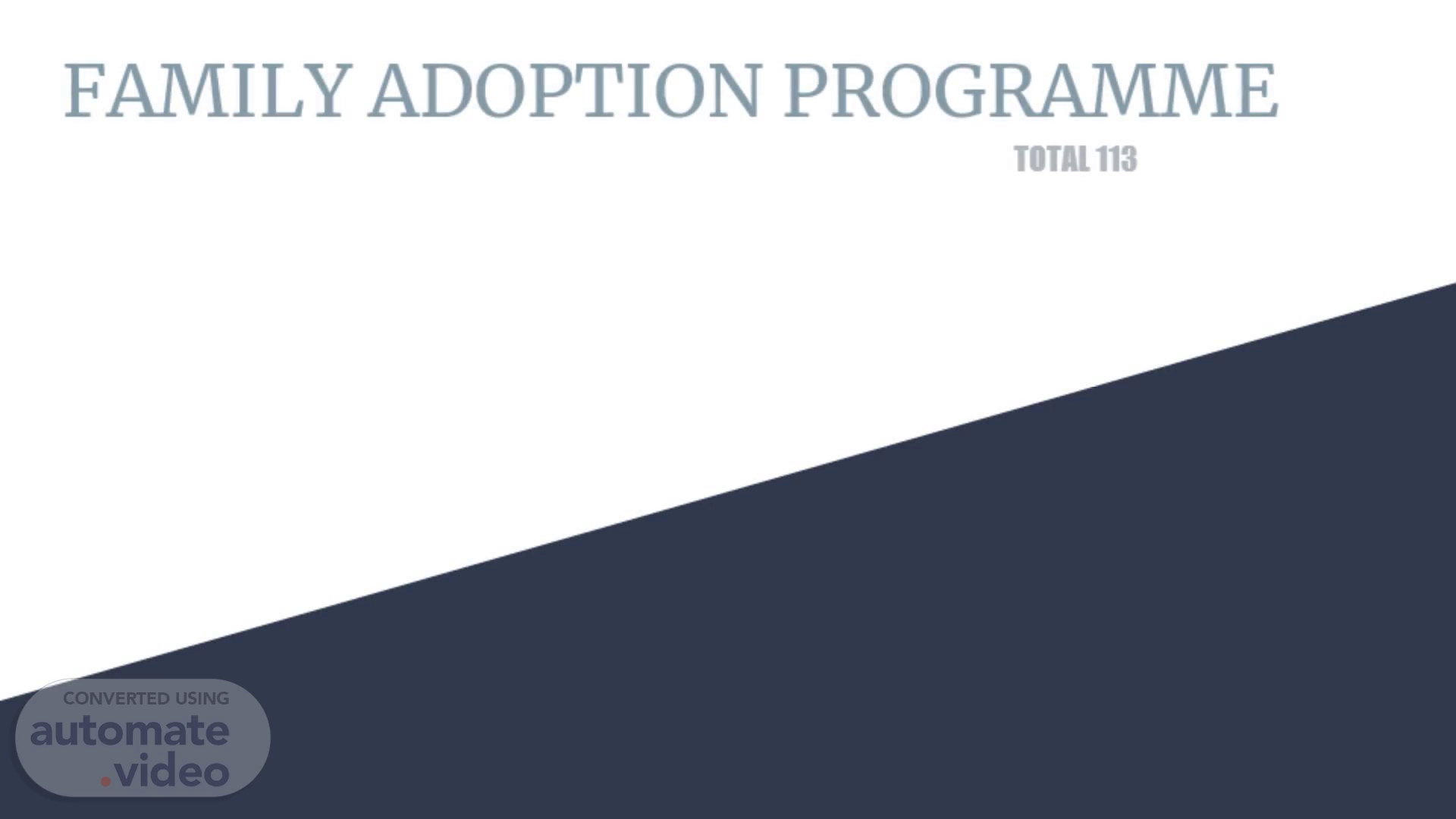
FAMILY ADOPTION PROGRAMME
Scene 1 (0s)
[Audio] Good morning everyone. Today I will be presenting to you our Family Adoption Programme. We will cover the age, gender, literacy status, occupation, socio-economic status, body mass index, and health status of the 113 individuals that we are supporting through this programme..
Scene 2 (21s)
[Audio] Our Family Adoption Programme provides an opportunity for families to take in children within the age group of 12. The gender distribution of participants is 25% male and 75% female, with a total number of 113 participants..
Scene 3 (38s)
LITERACY STATUS. FREQUENCY 'LUX RATE PR M ARY MIDDLE HIGHER HIGHER SECONDARY GRADuATION.
Scene 4 (44s)
OCCUPATION. FREQUENCY 11 o UNSKILLED 13 SEMI SKILLED 8 SKILLED 4 PROFESSIONALS OTHERS.
Scene 5 (51s)
SES PER CAPITA INCOME. Upper 19 Upper middle mi ddle 33 lower middle FREQUENCY 10%ver.
Scene 6 (58s)
BMI STATUS. FREQUENCY vs. UNDERWT NORMAL OVE RWT OBESE CLASS FREQUENCY.
Scene 7 (1m 5s)
[Audio] The breakdown of the 113 recorded family adoptions of the family adoption program is as follows: Healthy with 77 adoption cases, Anemia with 16 cases, Joint Pain cases with 15 and Thyroid cases with 5 cases..
Scene 8 (1m 22s)
IMMUNIZATION. 125 100 50 25 FREQUENCY 16 Fl 113 TOTAL.
Scene 9 (1m 28s)
TYPE OF FAMILY. FREQUENCY Joint Nu ear O FREQUENCY vs. 5 Type of family 17 20 FREQUENCY.
Scene 10 (1m 36s)
HOUSE. FREQUENCY vs. House FREQUENCY 8 6 4 2 RENTED House OWN.
Scene 11 (1m 43s)
TYPE OF HOUSE. 25 20 5 o KUTCHA FREQUENCY MIXED PUCCA.